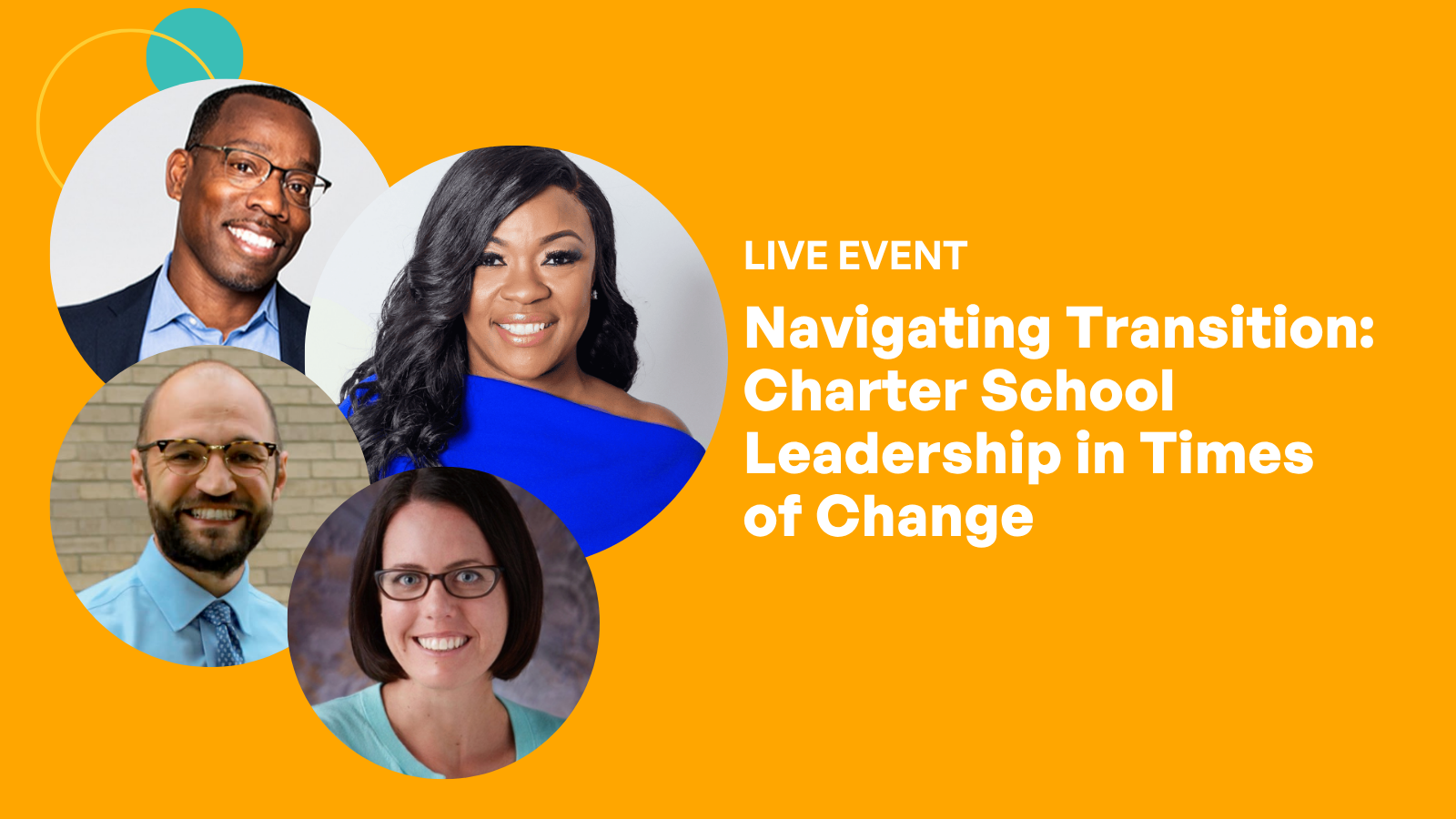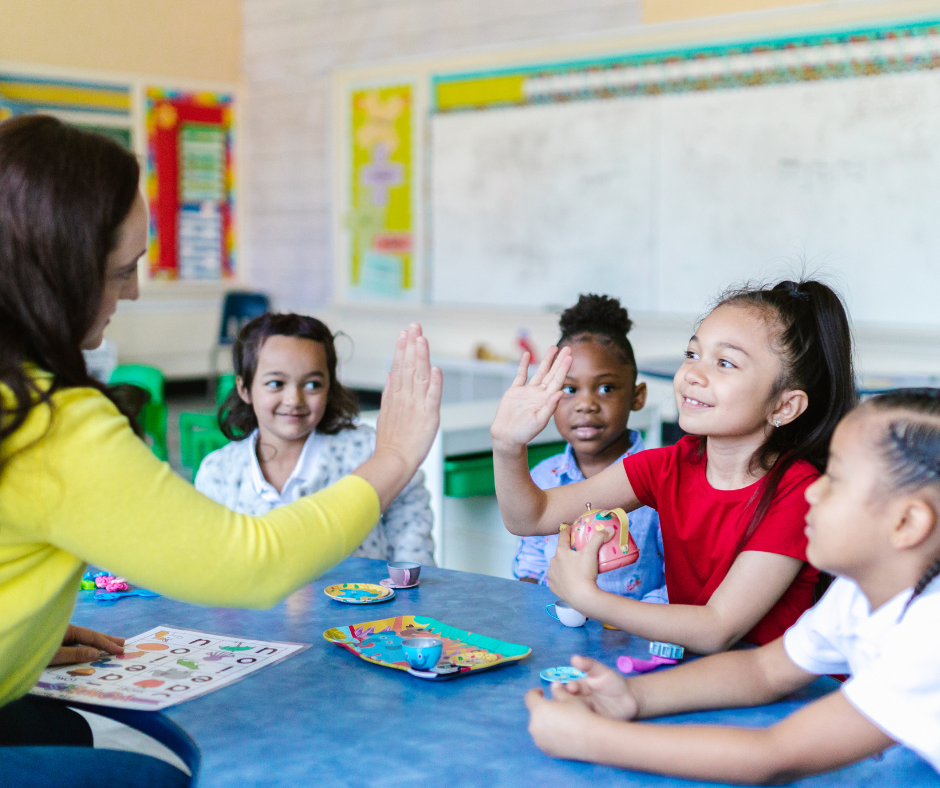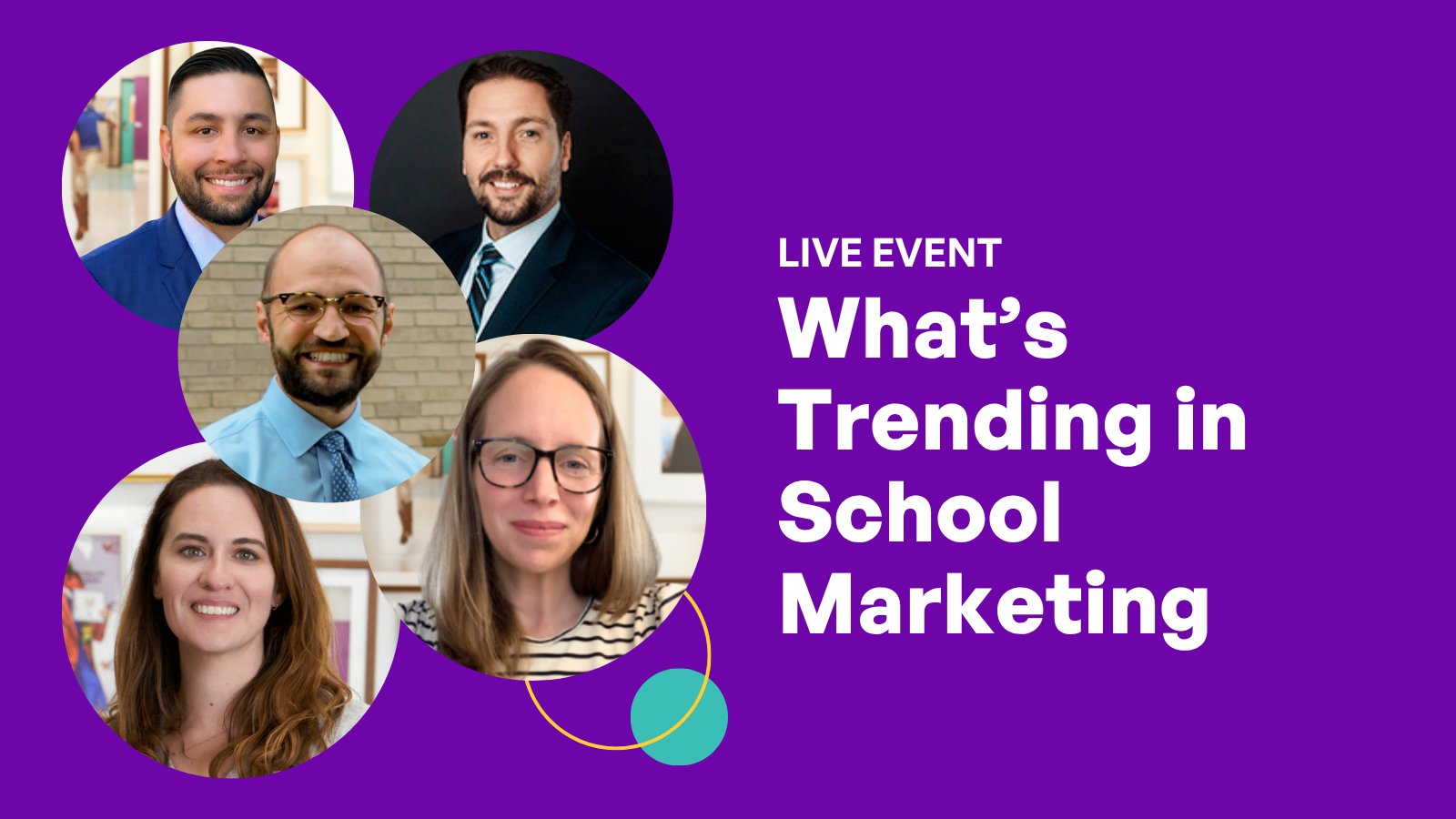Marketing your school for enrollment can feel like one more side dish added to an already heaping plate of responsibilities and goals. However, when it comes to creating a strategic marketing approach, it is possible to take a smaller serving and still reach your goal of more students in seats. Here are some tried and true marketing strategies that will attract new families and retain your existing students, along with a few things you can take off your plate.
Show Up Consistently & Authentically
Successful marketing isn’t about chasing viral moments or being on every platform. It’s about showing up consistently on your website and chosen channels with authentic glimpses into life at your school.
Your goal is to share what makes your school special by posting 2-3 times per week on Instagram and Facebook. Unsure what to post? Start with small moments, interviews, student achievements and highlights from school events. If you are a high school, your students can be some of your best social media ambassadors – try a Tuesday Takeover (with teacher approval, of course) and let students contribute to your content calendar for the year.
This consistency will build trust with your audience and show prospective families that you’re well-established in your community.

Align Your Content With the Enrollment Cycle
A little bit of planning can make posting to social media easier and ensure you are prepared for key enrollment events. One of the best ways to do this is to align your school’s enrollment cycle with your content calendar. Here’s what I’ve found to be a typical enrollment cycle and what you should be posting during these critical times:
October-December: School is in full swing, holidays are busy and families generally aren’t planning for next year yet. This is an ideal time to build brand awareness on social media. Post to your social media channels a couple times a week, sharing what makes your school special and celebrating the everyday moments that define your community.
January-March: Active recruitment season. Your ads are likely running during this time, open enrollment might be launching, or you’re preparing for an enrollment lottery. Your content should serve as a consistent reminder that now is the time to enroll. Make information about how to apply crystal clear and easy to find.
April-June: Applications are still rolling in. Families are realizing the school year is winding down and starting to think seriously about next year. You want to be top of mind as they ask themselves, “Where is my child attending in the fall?”
July-September: This may feel like the time to take a break, but this is actually a crucial time to maintain your presence on social media. Welcome new families, celebrate current students, and share back-to-school excitement. If a family enrolled in February, they have six months before school starts—plenty of time to get excited about their choice. Use this period to keep them engaged, remind them why they chose your school, and help them look forward to the fall.

Turn One Event into Multiple Posts
Your school-wide festivals, student-led conferences and achievement assemblies are a gold mine for social media content. If documenting and sharing feels overwhelming, you can work smarter by repurposing one even into multiple posts across all your channels.
Let’s say you created a virtual tour video for your website. You can also share a clip as a reel on Instagram, post a still photo and caption on Facebook, and send an email to prospective families sharing the highlights from your video. There’s no need to constantly create brand new content from scratch. Instead, be strategic in how you repurpose it and maximize your effort to prevent burnout.
Understanding Your Enrollment Funnel
If you’ve been around marketing at all, you’ve probably seen an enrollment funnel diagram. At the top is awareness—that’s your social media, paid ads, SEO, and community events. This is where families first learn you exist.
The next stage is engagement. Families are ready to learn more and actively engage with your content. Meet them where they are through tours, open houses, a well-written landing page, and easy website navigation.
Then comes conversion—when families actually enroll. Focus on creating smooth processes and seamless transitions at this stage.
At the bottom is loyalty—what you do every day to keep families engaged and happy so they stay with you and share about your school with others.
Here’s the key insight: look for where families are leaving your funnel. Are they submitting forms but not scheduling tours? That process could use some attention. Coming for tours but not applying? There’s an opportunity to strengthen that experience and address any concerns they might have.
As marketers, we can always generate more leads at the top of the funnel. But if you have gaps in your funnel, more leads won’t solve the underlying issue. It’s about fixing the experience at each stage.
Your Homepage: The Five-Second Test
Everybody who visits your website scans your homepage quickly – that’s why you need to have key information readily available within five seconds.
Do a quick homepage audit:
- Can visitors immediately see what grades you serve?
- Is your location clear?
- Is the “Apply Now” or “Schedule Tour” button easy to spot?
- Are there photos showing your school in action that give a feel for your culture?
Families are busy and often researching multiple schools, so clear navigation helps them quickly understand if your school might be a good fit. And don’t forget to check that your website also looks great and is easy to navigate on mobile devices—most families research schools on their phones during lunch breaks, in carpool lines, or in the evening from the couch.
Simplify Your Forms & Don’t Forget to Follow Up
Detailed inquiry forms can create unnecessary friction for busy families who want to connect with you quickly.
Instead, capture only the essentials: name, email, and phone number at minimum. It doesn’t hurt to ask for the grade level(s) they are interested in, but keep everything else streamlined. Remember, the goal of the form is to start a conversation, not to collect every piece of information upfront.
The first 24 hours after someone fills out a form are critical for building connection and momentum. Set up an automated confirmation via email or text so parents know their inquiry reached you. In that confirmation, share what your school’s enrollment process looks like. It can be as simple as “We’ll follow up with an email or phone call in the next 24 hours.” Clarity and responsiveness will build trust right from the start.

Free Tools Can Help You Strategize
Google Analytics tells you everything you need to know about what’s happening on your website—and it’s completely free to use.
Look at where your traffic is coming from to discover what’s really working. High organic traffic? You have a strong web presence and SEO. Lower traffic from Facebook ads? You might consider adjusting your ad strategy or spending.
The pages that get the most visits tell you what prospective families are looking for. If your athletics page or STEM page consistently gets high traffic, lean into that in your marketing messaging by highlighting those programs.
Your inquiry form completion rate shows you how easy—or difficult—it is for families to connect with you. If that rate is low, streamlining the form (as I mentioned above) could help.
Also check your bounce rate on key pages like landing pages and enrollment pages. If people are leaving quickly, ask yourself: what can we do to keep people engaged on these pages and make it easy for them to click that “Enroll Now” button?
Success Requires Commitment
Whether you’re working with a marketing partner or building your strategy internally, you’ll need to invest time every week. Laying the groundwork with authentic stories from your students, families, and daily school life will be more effective than chasing viral moments on the latest platform. The marketing strategy and tools amplify what you create, but the heart of it has to come from you and your school community.
The long and short of it? Show up where your families are, tell real stories about what makes your school special, and make every step of the enrollment process as easy and welcoming as possible.
About the Author

Jesse Foss is a Content Strategist on the Enrollment Marketing team at Grow Schools, where she helps charter schools develop and implement effective content strategies that drive enrollment.















